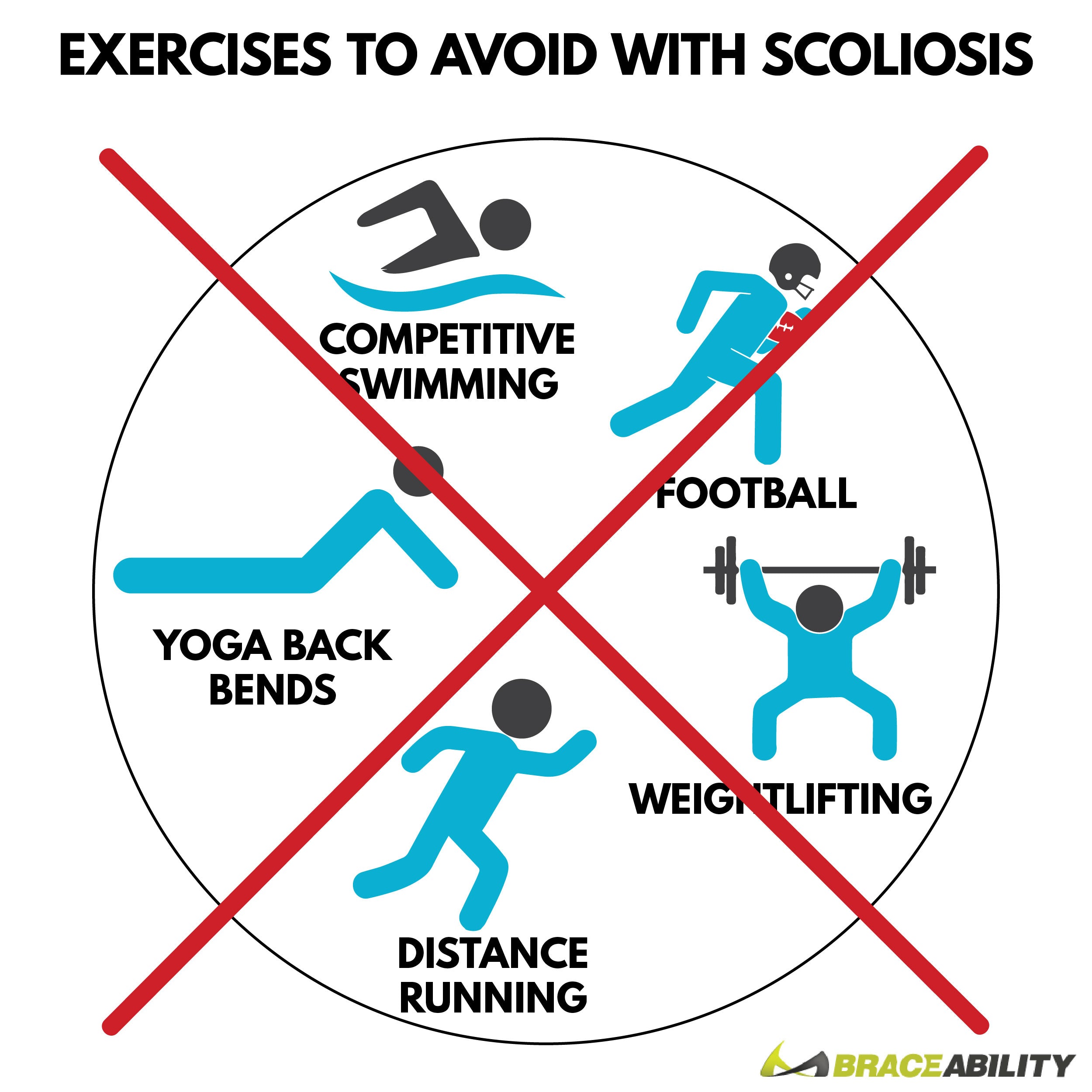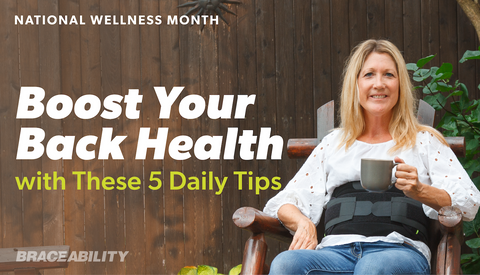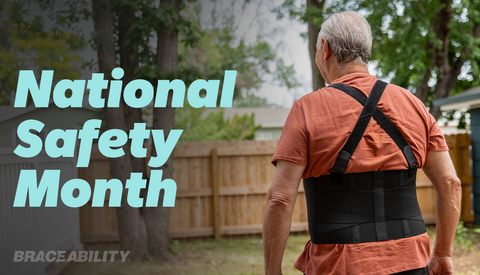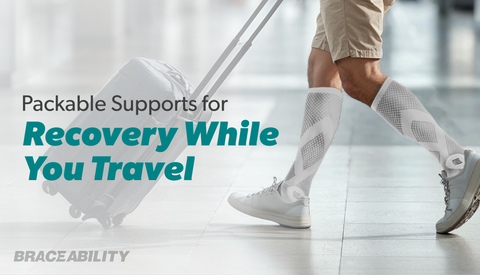Scoliosis
What is Scoliosis?
Scoliosis is a curvature spine disorder in which your vertebrae curves to the side (lateral curve). A normal and healthy spine has a natural round curve in the upper back and an inward curve in the lower back. When viewed from the back, a healthy spine appears to be straight. If you look at an individual with scoliosis from the back, the spine appears to be curved. This curve looks like the shape of an “S” or “C.”
There are other curvature spine conditions, learn about the different symptoms, causes, and treatment options.

What Are the Symptoms of Scoliosis?
Usually, scoliosis in adolescents and children tend not to have any symptoms at all. It is usually noticeable when the spine becomes moderately or severely curved. Pain may occur from the curved spine pressing on the vertebrae discs, nerves, muscles, or ligaments. Other indications that your child has scoliosis:
- One shoulder is higher than the other.
- One hip is higher than the other.
- Your child’s head is not centered or in the middle of their body.
- One shoulder may appear to be sticking out.
- The ribs are higher on one side when your child bends forward.
Aside from children, adults may experience different symptoms:
- Low back pain and stiffness
- Numbness, cramping, and pain shooting up the legs
- Fatigue
Kyphosis and scoliosis tend to have similar symptoms. Check out our library article on kyphosis to help decipher between the two conditions.
What Are the Different Types of Scoliosis? What Causes Them?
There are many different types and causes of scoliosis:
- Congenital scoliosis: Caused by a birth defect and occurs in only 1/10000 newborns. Individuals that have congenital scoliosis may have other underlying health problems such as kidney or bladder issues. There are four different types of congenital scoliosis: incomplete formation of vertebrae, failure of separation of vertebrae, the combination of bars and hemivertebrae, and compensatory curves.
- Neuromuscular scoliosis: Caused by disorders of the brain, spinal cord, and muscular system. This is frequently seen in individuals with spina bifida, cerebral palsy, Marfan syndrome, or paralysis. Neuromuscular scoliosis causes the nerves and muscles to be unable to maintain proper balance.
- Degenerative scoliosis or adult-onset scoliosis: This type is unique because it is adult-onset scoliosis, compared to the other types, which mostly occur in children. This is caused by degeneration of the facet joints, making them shift the spine to the side. The spine may also be affected by osteoporosis, compression fractures, and disc degeneration. This type is frequent in individuals over the age of 65.
- Idiopathic scoliosis: This type is the most common form of scoliosis, over 80% of all scoliosis cases, and usually affects children between the ages of 10 to 18. Idiopathic scoliosis is more common in adolescent girls. These curves progress as the child ages and slow down when they have hit maturity. For more severe cases, those with a curve over 50 degrees, it is likely their curve will progress even after they’ve hit maturity. Unfortunately, the cause of idiopathic scoliosis is unknown. There are many different theories and assumptions behind this condition such as being genetic but have yet to find any of them conclusive.
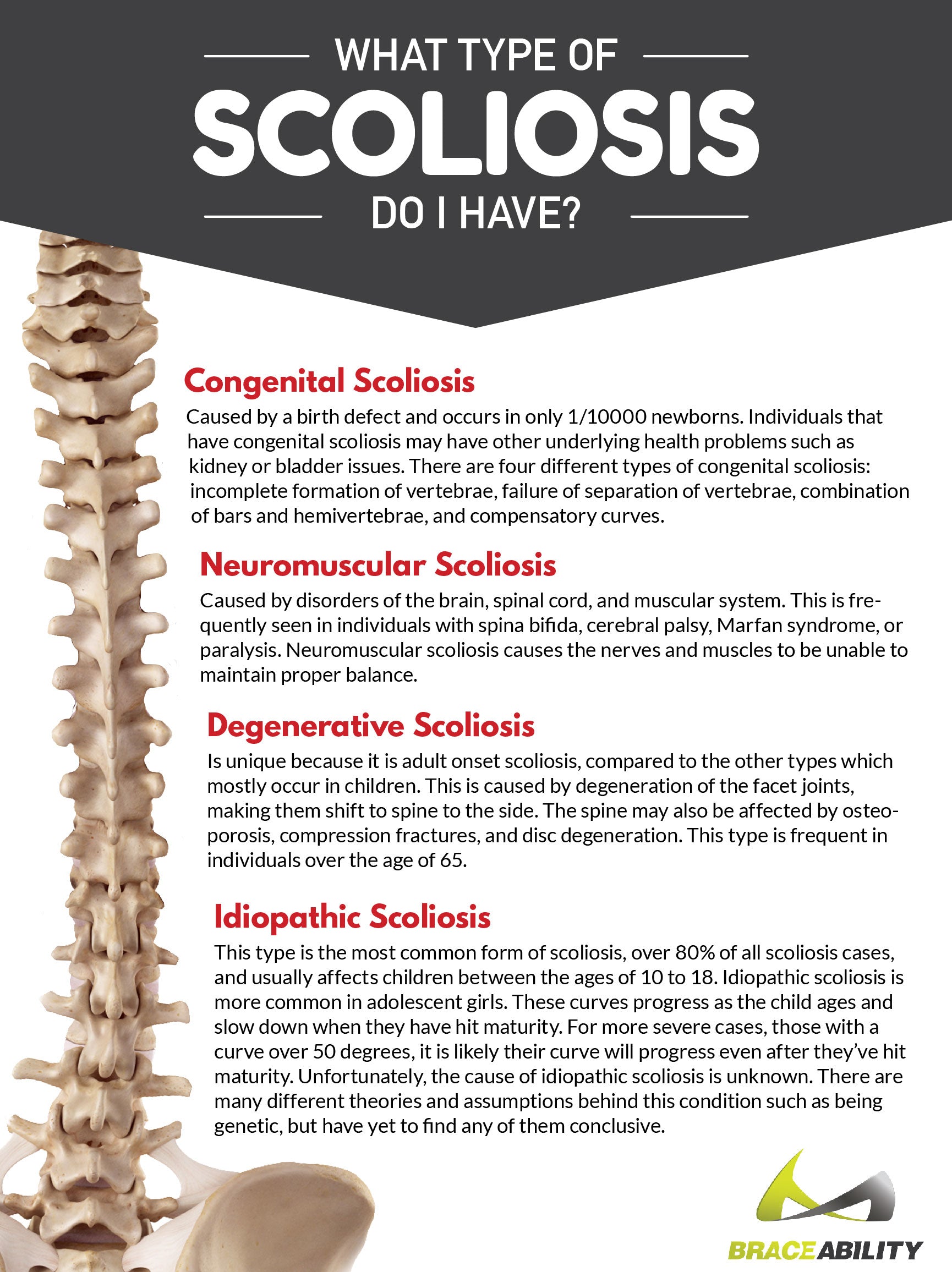
How Is Scoliosis Diagnosed & What Are Some Risk Factors?
In adolescents, scoliosis is usually found during school screenings or physical exams. Initially, your doctor may ask questions regarding medical history and about the growth process of your child. In order to further exam your child, your doctor will have your child stand and bend forward at the waist to see some areas such as rib cages, shoulders, or hips are more prominent compared to the other.
Diagnosing the type and cause of scoliosis is done by a bone exam and an X-ray to determine the degree, location, direction, and angle of the curve. In addition, other scans such as MRIs or CTs may be used. Your doctor may also do a neurological examination to check for muscle weakness, numbness, and abnormal reflexes.
There are a few different risk factors for developing scoliosis including:
- Age: Usually, signs and symptoms of scoliosis occur when your child is growing or during a growth spurt.
- Sex: As mentioned previously, although boys and girls can develop scoliosis, girls have a higher risk of having the curve worsen.
- Family history: Scoliosis may run in families and may be a cause of your child’s condition.
How Can I Treat Scoliosis?
Luckily, treatment is usually not needed, but in some cases can be necessary. If treatment is needed, there are many factors to be considered when choosing the right option for your condition including gender, the severity of the curve, location of the curve, the pattern of the curve, and maturity. Treatment options to help reduce your curve from getting worse or to help alleviate your pain:
- Observation: In most mild cases, observation is the best preventative and proactive way to help treat scoliosis. By observing and scheduling regular check-ups, you will be able to see if the condition worsens with time.
- Physical therapy: Physical therapy will help by doing range of motion exercises, strength training, manual therapy, functional training, and education on scoliosis and the effects of this condition.
- Back braces: Back braces for scoliosis tend to be plastic and conform to the individual's body. These help to immobilize your spine and help to prevent further progression of the curve. Usually, adolescents with a curve between 25 and 40 degrees wear a back support especially if they have two or more years of growth. For degenerative scoliosis, wearing a posture brace can help prevent this onset condition. Wearing a posture corrector helps to strengthen and train your back muscles.
- Surgery: Surgery is typically for individuals with a curve larger than 40 to 50 degrees. These surgeries are meant to halt the curve from worsening.
- Spinal fusion: Connecting two or more of the bones in the vertebrae together, pieces of the bone are then placed in between them. They use metal rods, hooks, or screws to hold the part of the spine straight while the old and new bone fuse together.
Can I Exercise with Scoliosis?
Exercise and stretching for scoliosis can help relieve your pain and strengthen your back muscles but it’s important to stray away from those exercises or activities that could further harm your back. Talk to your doctor about your specific condition and what exercises they might advise or say to avoid.
Exercises to help with scoliosis:
- Stretching: Although this may not seem as exercise, it can be vital in helping to relieve tension and stress that is caused by scoliosis.
- Bend over in the direction of your spinal curve
- Chest stretch: Stand and stretch your arms out to your sides with your palms facing forward
- Shoulder squeeze: Stand with your feet shoulder-width apart and your arms out in front of your chest. Pull your arms backward while pressing your shoulder blades together.
- Yoga: Helps alleviate back pain and promote a balanced, strong spine.
- Knee down twist: Lay on your back, pull up your left leg then drop the left knee over to the right side of your body. Look to your left with your arms out to the sides, palms facing down. Repeat for the other right side
- Cat pose: While on all fours, arch your back as you exhale and tuck your chin into your chest.
- Downward dog: Start in the cat position (above), then stretch your legs up, lifting the hips and keeping the spine straight.
- Child’s pose: Resting position, kneel on the floor with your big toes touching your knees. Then move your knees as wide as your hips and reach your arms forward on the ground. Rest your torso on your thighs and forehead on the floor.
- Core work: Strengthening core muscles will help to support the spine.
- Upright rows: Stand with your spine straight and do rows with dumbbells
- Superman: Lie on your stomach with arms out wide in front of you with your palms facing down. Lift your feet and arms up in the same motion.

Exercises to avoid scoliosis:
- Competitive swimming: Swimming for a long period of time can cause the thoracic spine to flatten. This flattening might progress your scoliosis, it’s important to do exercises that keep your spine in a normal position.
- Football: Try to avoid high contact sports to reduce your chance of a traumatic injury to the spine or body; football tends to put stress on the spine. Speak with your doctor about your condition or your child’s condition.
- Long distance running: Those who have scoliosis can still run, however, it’s advised to run mild distances. Long distance running can compress and bend your spine over time.
- Yoga backbends: As mentioned above, yoga is a great exercise to help strengthen your back, shoulder, and core muscles. You should try to stay away from any positions that bend your back at different angles.
- Deadlifting or weightlifting: Holding weights repeatedly while bending over can pull and move your muscles in your back different ways.
